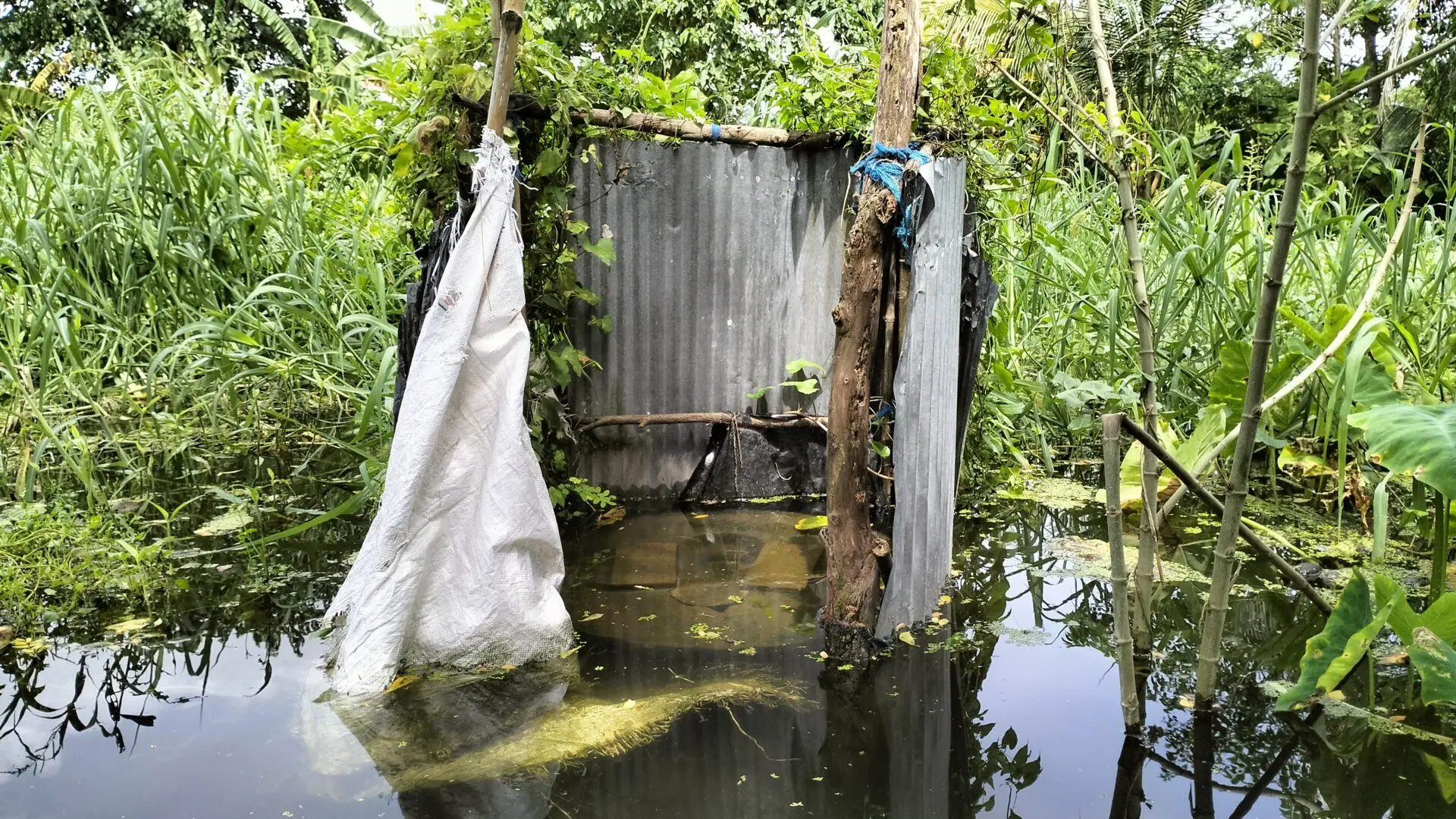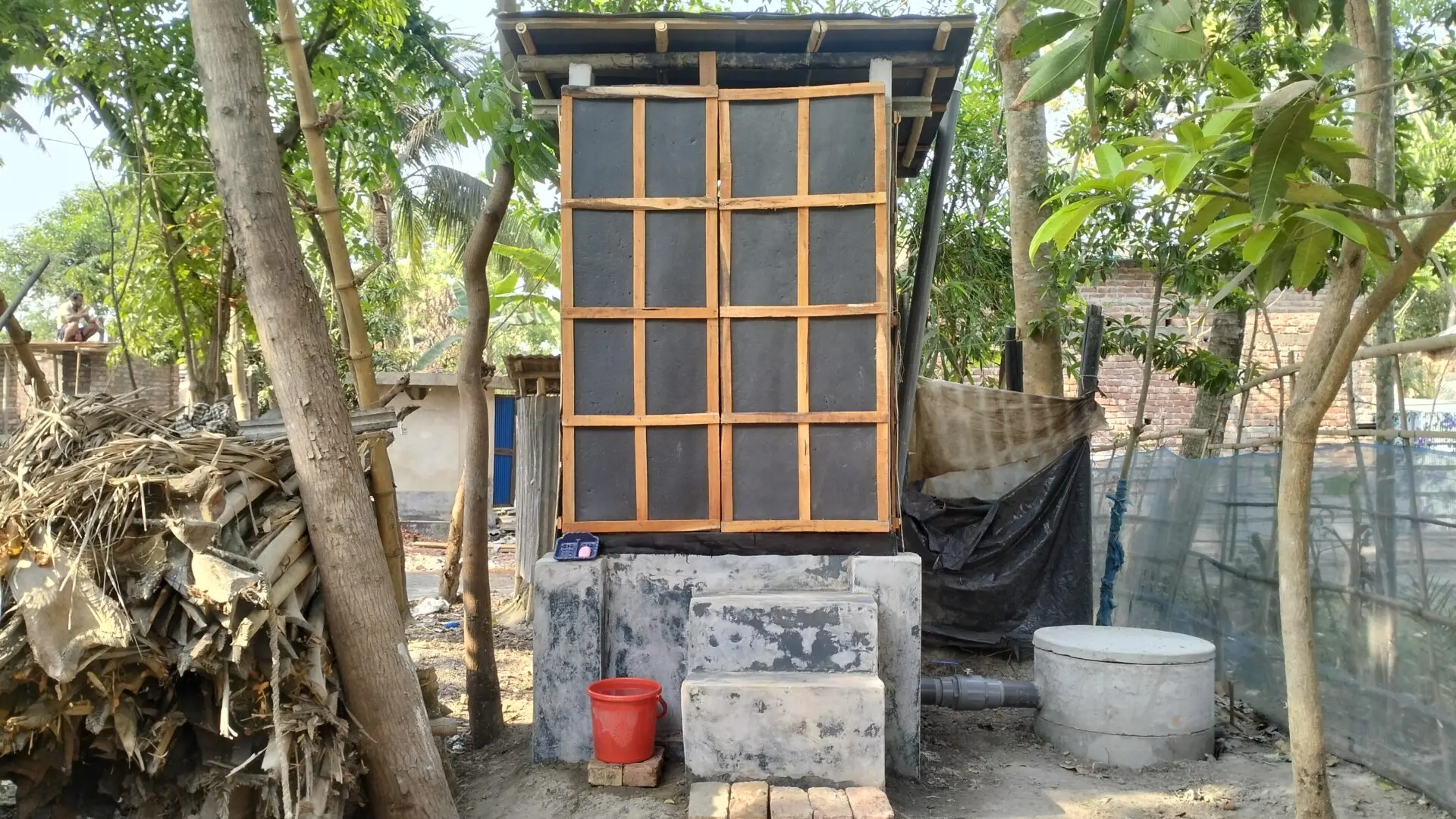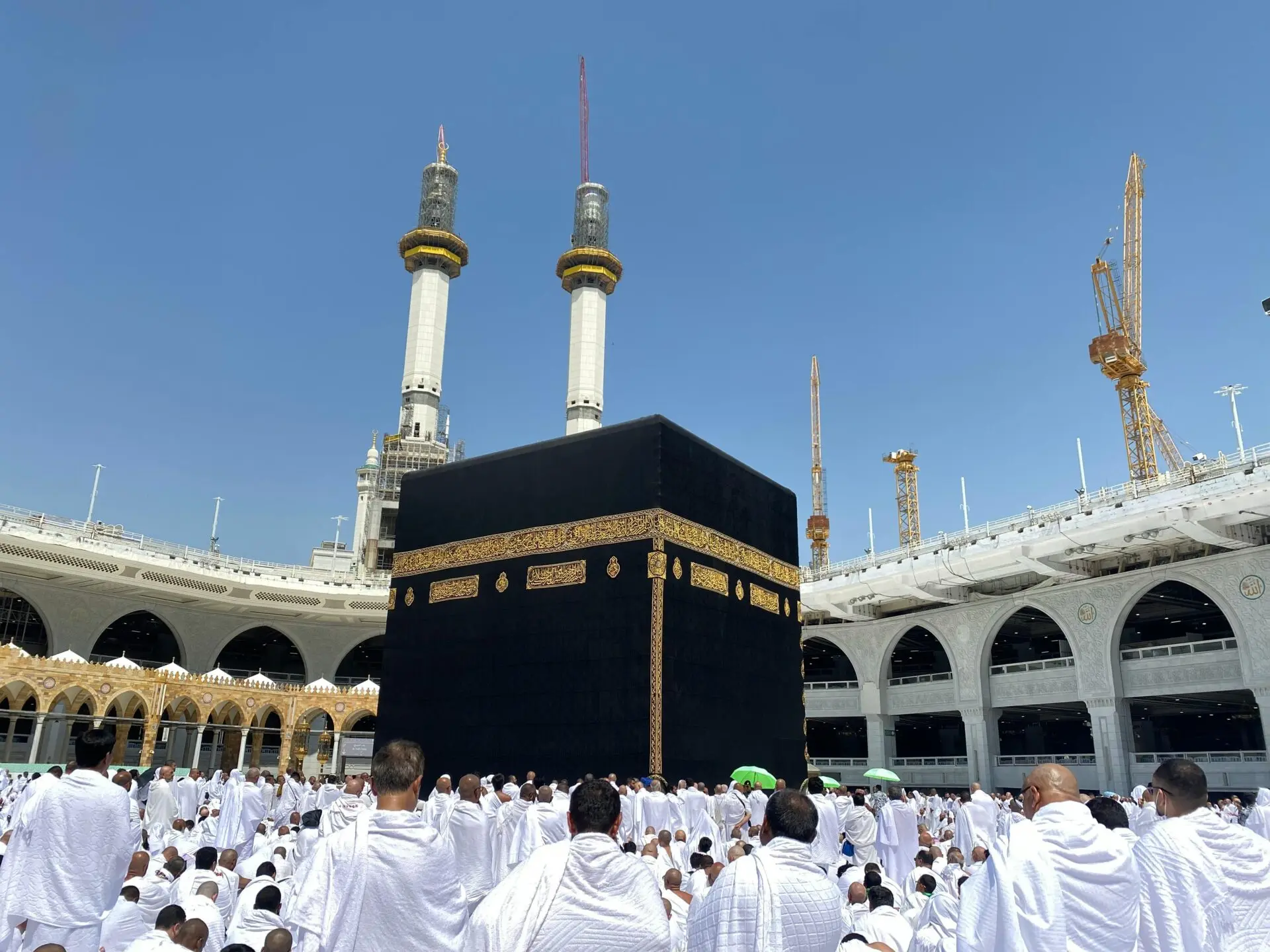No respite
Before their land was flooded, Monirampur’s residents’ suffering was only temporary – when the monsoons subsided, the land dried and their latrines were above water again. But after, there was no respite.
“We stopped eating before bedtime,” Rupali says. Her husband, Ajit, says that families rationed meals to minimise bathroom trips. The alternative – using bamboo made hanging structure (Shako) – risked disease, snake bite, danger and humiliation. Pregnant women, children and elderly people suffered most.
In trying to control nature, humans had created a disaster that stripped away basic dignities. On top of this, plastic waste from makeshift sanitation solutions choked the remaining waterways, damaging the environment.
An innovative solution to a unique problem
When Islamic Relief’s team arrived in Monirampur in 2023, they didn’t bring prefabricated solutions. Instead, they asked, “what would work here?”
The answer emerged through months of collaboration with engineers and villagers – a deceptively simple structure that defied the waters. The climate-smart latrine stood on sturdy pillars, its concrete base rising 2 feet above the highest flood line. A clever gate valve system allows waste to be safely contained when water levels are high and processed when they lower. Equally importantly, the latrine was made using local materials – no plastic sheeting.
For Rupali, the change was immediate. “The first morning I didn’t have to plan my day around finding a private place” she says. “You cannot understand what that freedom means. After 26 years of living with shame and discomfort. “
Ripple effects
What began as 80 latrines has sparked a quiet revolution. Neighbouring villages have now replicated the design, while women’s groups are training others in climate-resilient construction. While Bhabadaha’s long-standing struggle stems from waterlogging caused by failed drainage systems – not plastic pollution – the community’s journey toward adaptation has had unexpected environmental benefits.
As people regained their dignity and stability, they also began addressing other challenges – like plastic waste that once clogged their few remaining waterways. Inspired by Islamic Relief Bangladesh, some villagers have even started making adaptive latrines using recycled rubber materials, reducing reliance on plastic sheeting and demonstrating how small innovations can lead to broader environmental gains.
This World Environment Day, as the world focuses on the theme of ‘Ending Plastic Pollution’, Bhabadaha offers a profound lesson: meaningful environmental solutions must begin with human dignity. Locally led adaptation is the best way of ensuring using local knowledge and skill for problem solution. Giving access to the financial resources vulnerable women can contribute in climate induced problem solving to improve their quality of life, and they’ll seek to protect their environment too.
Your support can help Islamic Relief change the lives of people affected by climate change in Bangladesh and worldwide. Donate today.
What’s the difference between hajj and umrah?
Hajj and umrah are both sacred pilgrimages in Islam and share many of the same qualities, rites, and rituals. However, there are some key differences, one of the biggest being that hajj is a pillar of Islam and required of every able Muslim, whereas umrah is a voluntary pilgrimage.
Here are some more differences between hajj and umrah:
- Hajj can only take place between the eighth and twelfth or thirteenth days of Dhul Hijjah each year, whereas umrah can be performed at any time of the year.
- Hajj lasts approximately 5-6 days (depending on the sighting of the crescent moon), whereas umrah can be performed within a day.
- There are 18 steps to perform in hajj, whereas umrah has far fewer.
The history of hajj
In 628 CE, Prophet Muhammad (PBUH) and the early Muslims performed the first hajj. The Prophet (PBUH) was instructed to re-establish the traditions started by the Prophet Ibrahim (upon him be peace) as instructed by God millennia before.
Under the commandment of Allah, Ibrahim (AS) travelled to the barren desert of Mecca to perform various acts of worship, including building the Kaaba, which Muslims today circumambulate as part of hajj.


